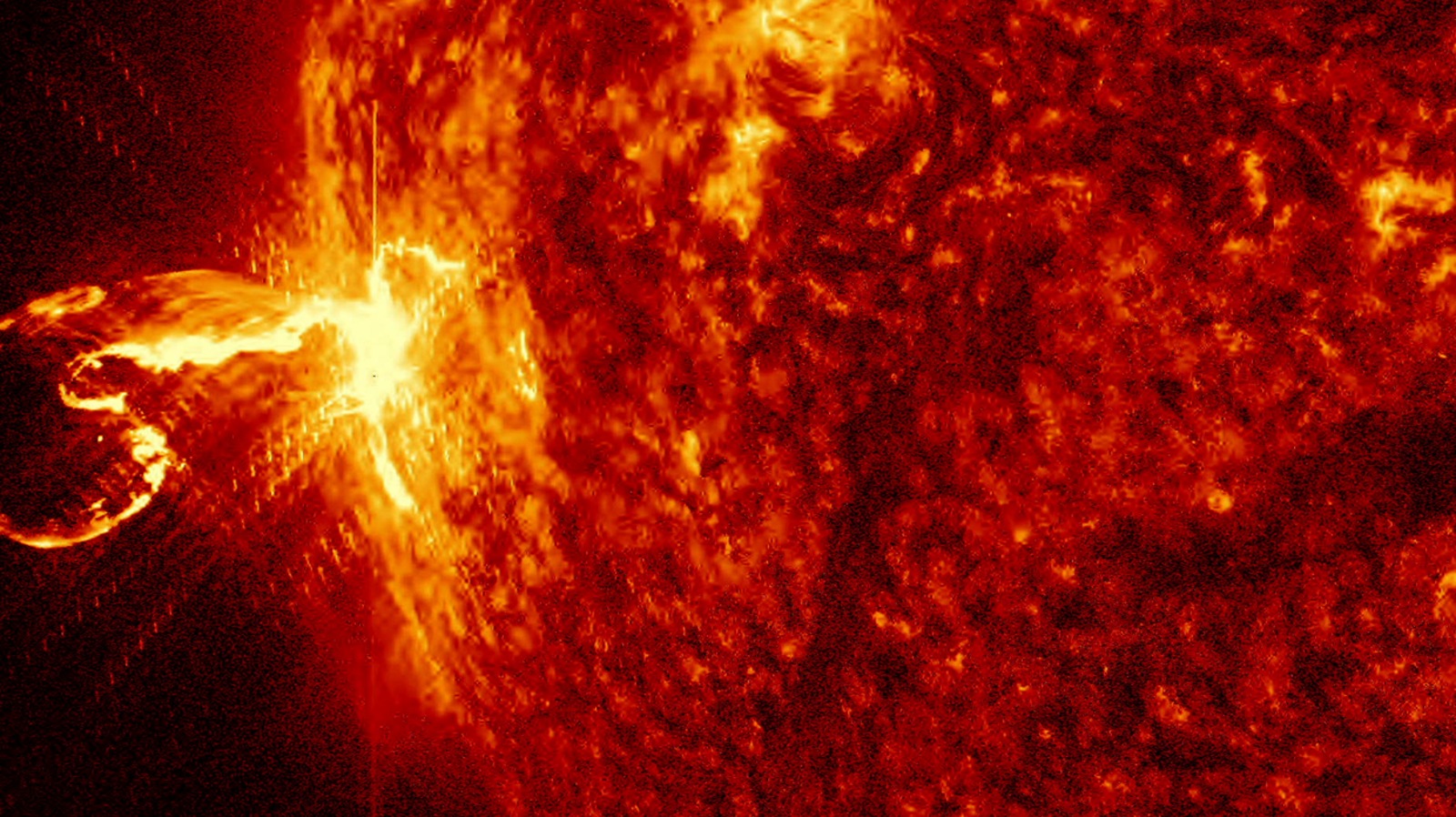A new giant sunspot is turning towards the Earth, NASA says; Is another major solar storm coming?
NASA Solar Dynamics Observatory has observed a new sunspot, which is growing and turning towards the Earth. It contains two dark cores which are wider than the Earth. Will it cause a major solar storm?
Just yesterday, on July 8, the Earth was hit by an unexpected solar storm. While scientists were able to predict the possibility of a solar storm based on the stealthy eruption which took place on July 3rd, however, it was stronger than anticipated and struck the Earth with a G2 class solar activity. Just a day later, NASA has more bad news for us. The Solar Dynamics Observatory has spotted a gigantic sunspot which is both growing and turning towards the Earth. The sunspot has two dark cores which are wider than the Earth. The dark core is the part of a sunspot which causes the instability in magnetic fields to cause spontaneous combustions known as solar flares. With this new sunspot coming into the Earth’s view, the risk of another major solar storm activity has now increased.
NASA Solar Dynamics Observatory first spotted the sunspot named AR3053 on July 5. After observing it for 48 hours, the American space agency has been able to confirm that it contains two dark cores which is quite rare for a sunspot. SpaceWeather.com reported on this and stated, “Big new sunspot AR3053 is growing and turning toward Earth. The sunspot now has not just one but two dark cores wider than Earth”.
A gigantic sunspot comes in Earth’s view and causes solar storm scare
While the size of a sunspot is not indicative towards the intensity of a solar flare and the resultant solar storm, it does indicate that a stronger solar storm and more dangerously multiple solar storms could be possible if the sunspot sets off early. Usually, when a sunspot is growing, it is comparatively stable, however with a sunspot this big, it cannot be stated whether it will go off or keep growing for a while. The two dark cores also make it a tricky situation as there is a higher possibility of spontaneous combustions. While NASA, along with the European Space Agency (ESA) and other space agencies of the world is observing this sunspot, it cannot be stated whether the Earth will be attacked by yet another solar storm.
However, if the sunspot does blast a powerful solar storm of G4 or above intensity towards the Earth, it can spell major disaster. The solar storm will not only cause heavy damage to satellites and disrupt communication systems on Earth, it will also make mobile networks, internet services and GPS systems become dysfunctional. In severe cases, it can also mess with electronic gadgets like smartphones and laptops as well as cause power grid failures.
For all the latest Technology News Click Here

